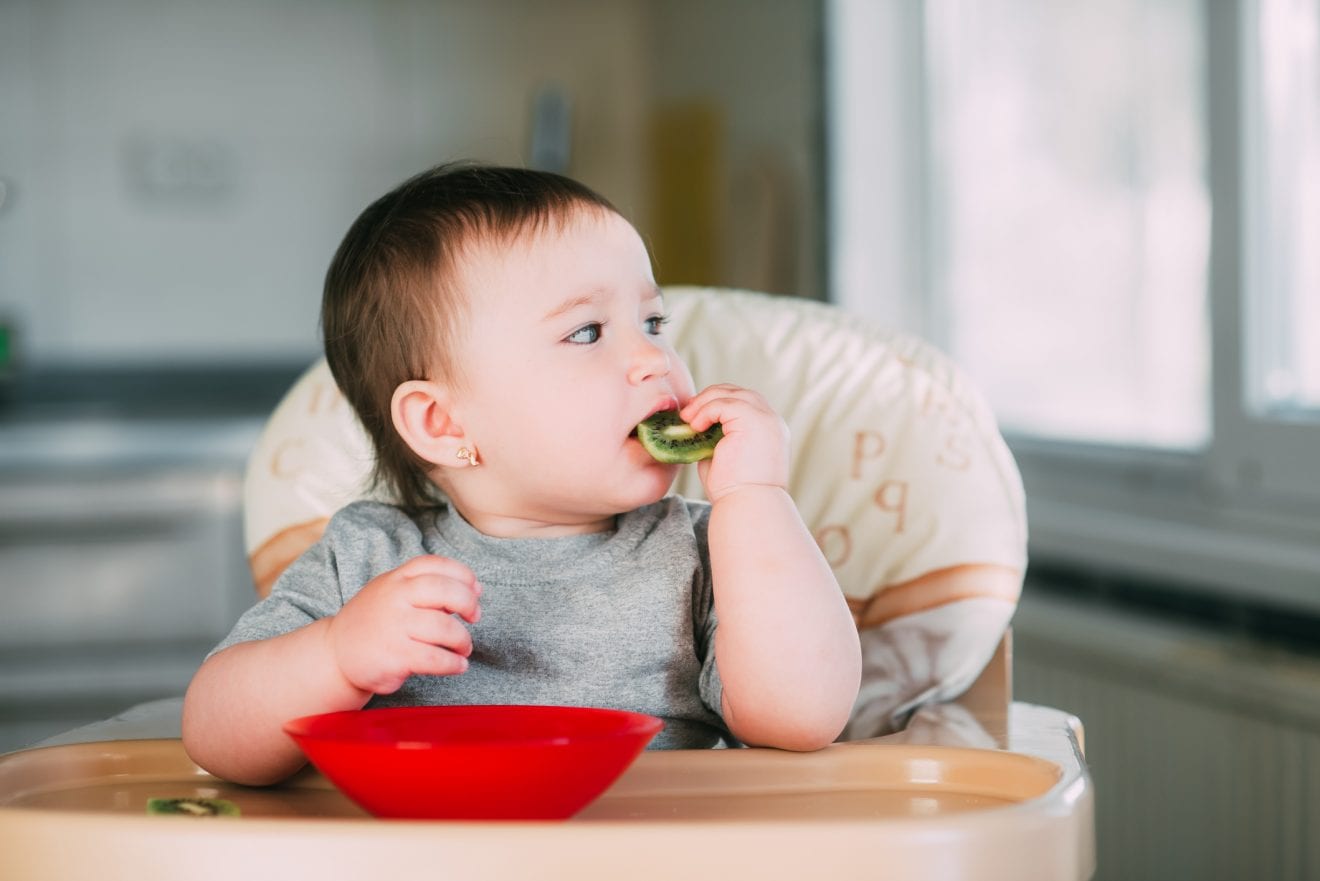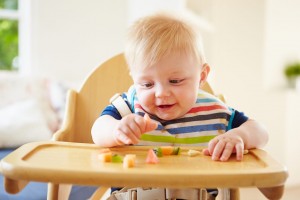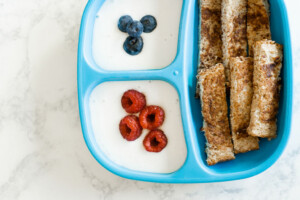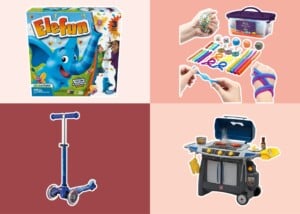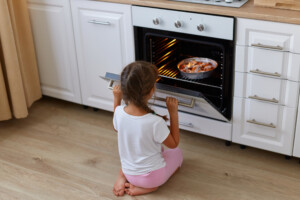Baby-led Weaning has become a popular feeding trend in the last decade. When I first started having kids, though, I’d never heard of it. After my daughter was born, I assumed I would eventually give her purées when starting her on solid food. However, I knew I would never give her the awful canned baby food in the grocery store.
For one thing, I had terrible college experiences (hey, sorority games!) trying those purees, and the thought of it made me gag. Secondly, I knew from research that most of these purées were not made with quality ingredients and often had sugar added. I preferred to feed my baby good food, so I decided I would make her purées. How hard could it be?
Long story short, I survived one week making homemade purées. ONE WEEK. I discovered the hard way I did not have the time, patience, or energy to make my kid food every several days. Admitting to myself that I was a lazy mom (i.e., tired mom), I was determined to find a better way. I started researching other methods of introducing solids and (praise the heavens!) I stumbled onto Baby-Led Weaning.
What is Baby Led Weaning?
Baby-Led Weaning (BLW) is coined by Gill Rapley and Tracey Murkett in their book Baby-Led Weaning: The Essential Guide to Introducing Solid Foods. Essentially, BLW is an approach to introducing solid foods to your baby by allowing them to self-feed finger foods instead of eating purees by spoon.
Why try Baby Led Weaning?
In short, BLW is just plain easier! It’s the exhausted parent’s answered prayer to mealtime. Purées, if made at home, can be time-consuming. And moms who do purées often spend a lot of time feeding their babies before themselves. With BLW, babies get to eat with the family (including mom!) and, for the most part, eat what the family is eating.
So yes, it’s a great parenting hack, but it’s also much more. BLW teaches babies to self-regulate how much they eat, self-select what they eat, and try out a wide range of healthy foods. All of this can lead to healthier food choices later in life.1,2 Babies also learn the art of chewing and swallowing and how to manage various textures, tastes, and sizes of food. Plus, they learn how to use hand-eye coordination and fine motor skills by moving food to their mouth. None of these things are learned when a baby is spoon-fed purées.
How do I know when my baby is ready?
Babies’ digestive systems are typically not ready to handle solid foods until 6 months old.3 So the short answer is anytime after that. However, there are a few more “readiness” signs your baby should be exhibiting before they should try BLW:
- Sits up well without support
- Has lost the tongue-thrust reflex (automatically pushes solid foods out of his mouth)
- Has developed the fine motor skills to pick up small solid objects (like the pincer grasp)
- Can chew (even with little to no teeth)
- Shows interest in mealtime and grabs at food
I waited until my babies reached for food before I started BLW (around 8 months old). In both cases, I was sitting on the couch with my kiddo, eating a banana, when they suddenly grabbed it. Before I knew it, they were chomping on the banana like a crazed baby monkey. We started BLW that night! I also continued to nurse both of my babies throughout the BLW process. It is important to continue giving breast milk and/or formula while introducing solids, as this is still your baby’s primary source of nutrients.
What about choking?
Many moms worry about the potential for choking with BLW. And it is an understandable concern. However, studies4 have shown that babies who feed themselves through BLW are no more likely to choke than babies who are spoon-fed purées. Common sense safety measures should be taken, of course. For example, don’t feed them foods that can’t easily be mashed on the roof of the mouth. Also, don’t give your baby small foods such as nuts, grapes, popcorn, or food cut into discs, like sausages or carrots. All foods given during BLW should be soft and easily mushed by the baby using his tongue and mouth.
Here are some great examples of soft foods you can safely give your baby from the start of BLW:
- avocado
- banana
- steamed veggies (carrots, broccoli, sweet potatoes, zucchini, beets)
- soft fruits (peaches, pears, plums, melon)
- finely chopped meats
- small pieces of bread
- rice or pasta
- pumpkin
- egg yolk
- liver
What tools do I need to get started with baby led weaning?
BLW can get messy! Feeding your baby while they have only a diaper on is key. I found that to be the best way to ensure we could clean up quickly after mealtime. I suggest investing in a few mealtime items for babies that will make the BLW experience fun and easy for both you and your little one:
- an easily cleanable high chair
- portable placemats for eating out
- an apron-style bib for catching dropped food
- an easily-cleaned floor mat (put it under the high chair)
- baby utensils
BLW is an easy and beneficial way of introducing your baby to solid foods for the first time. I used BLW with both of my kiddos, and we had a wonderful experience. Even if you’re not an exhausted parent (high five!), give BLW a shot. I think you’ll be surprised by how much you and your baby will love it!


















